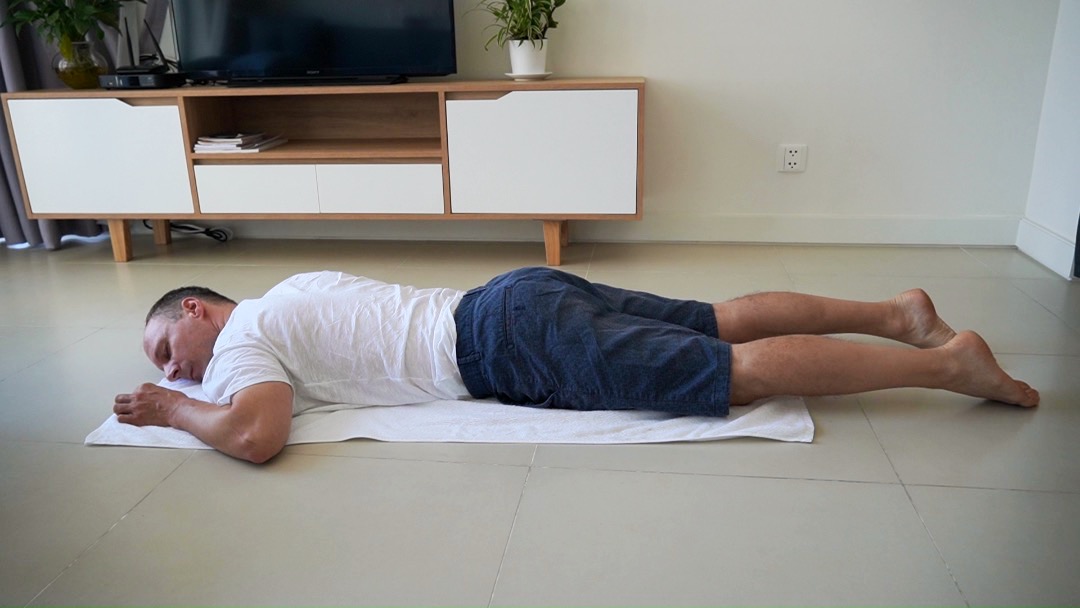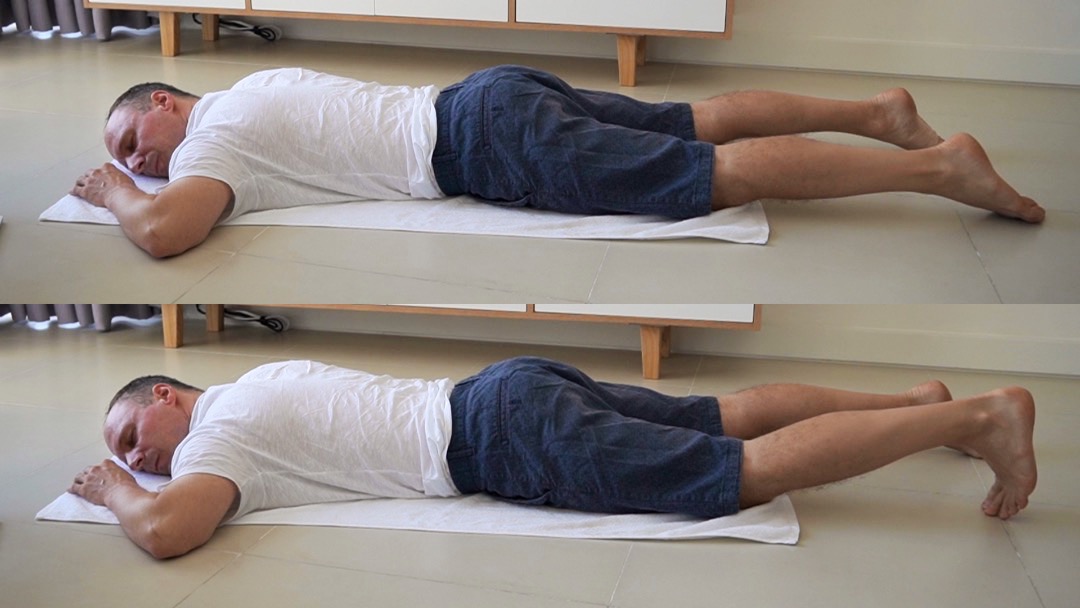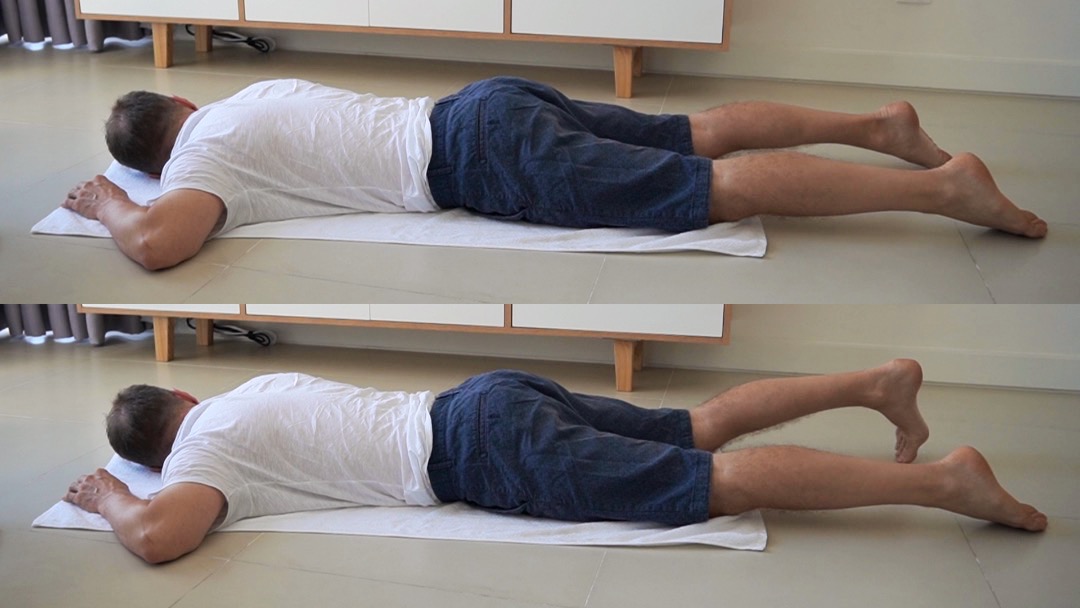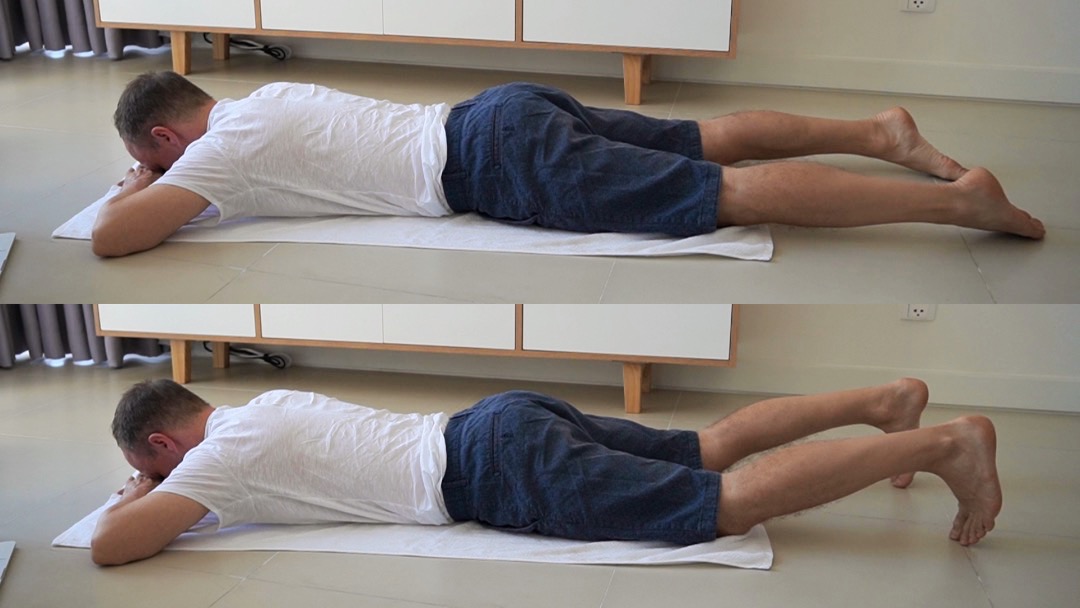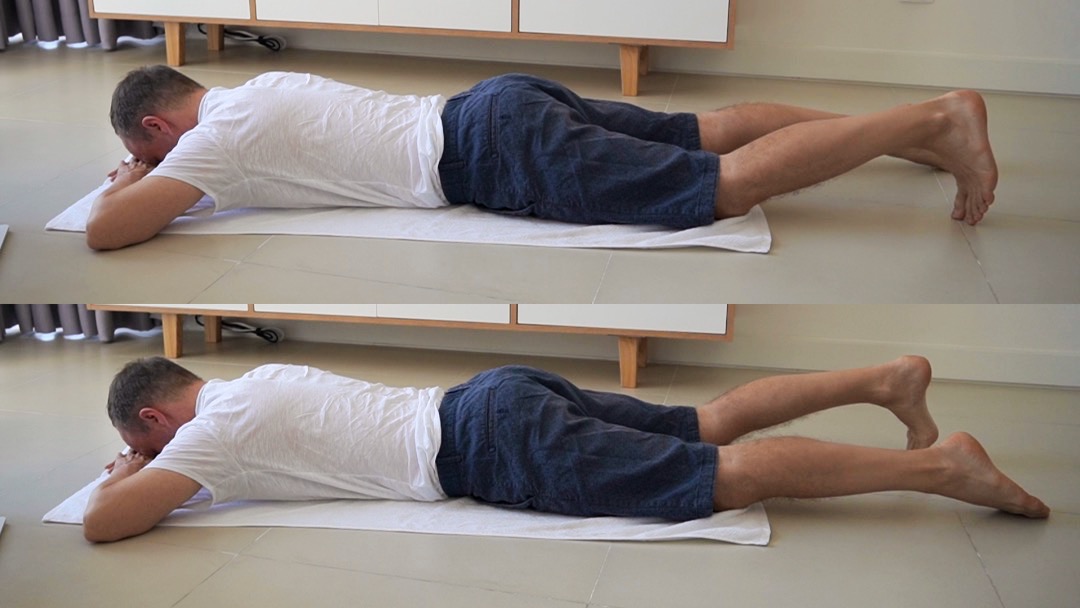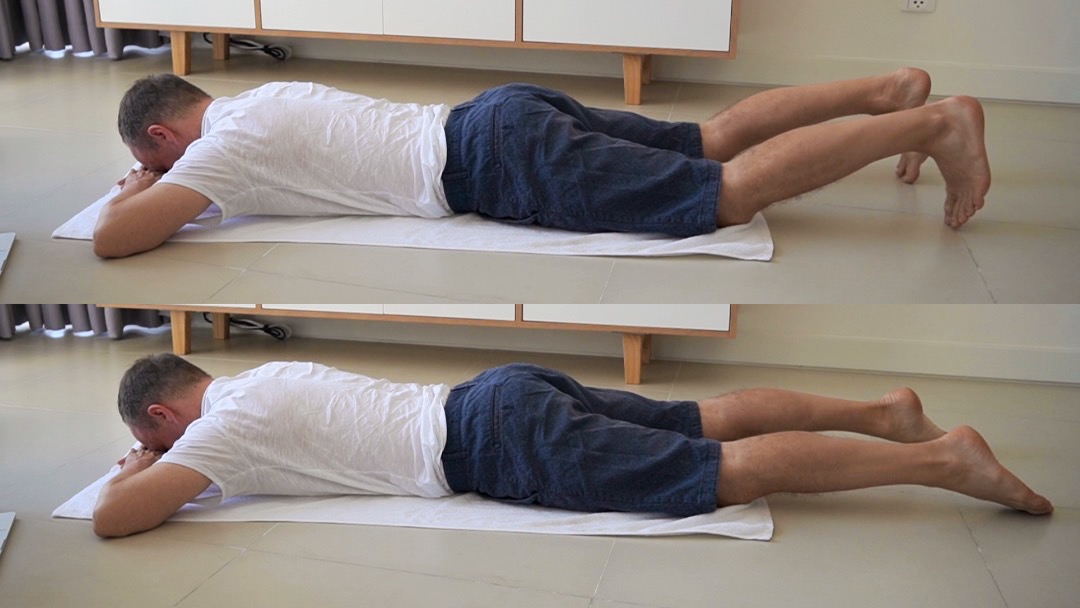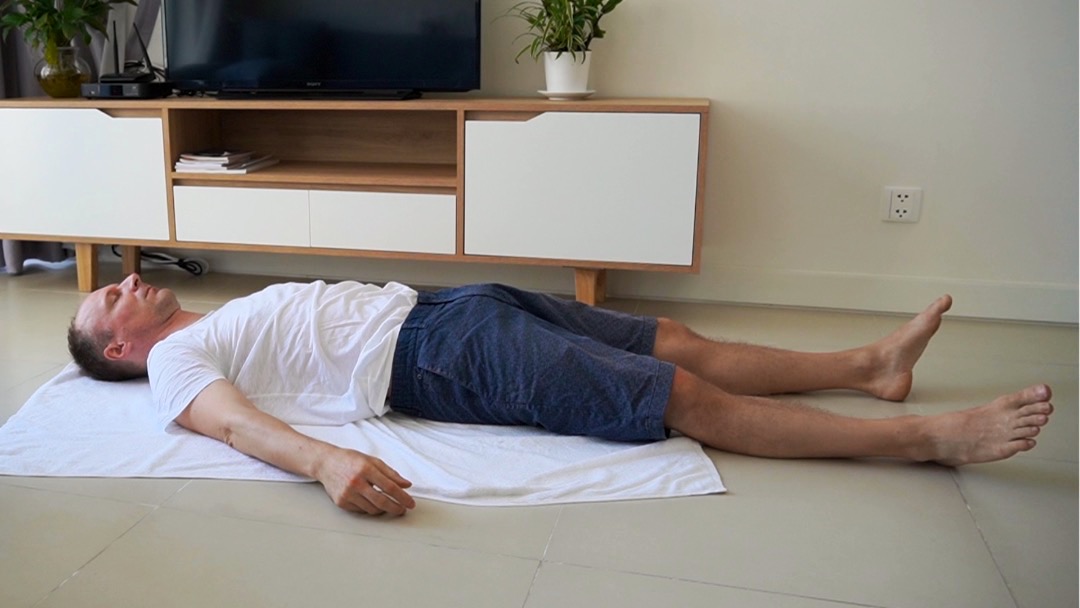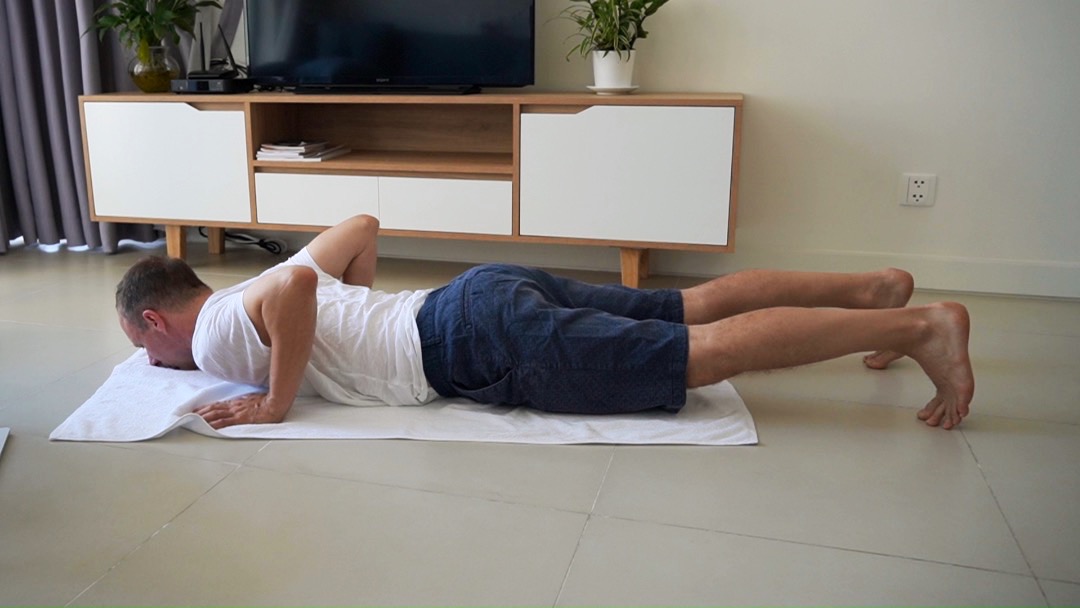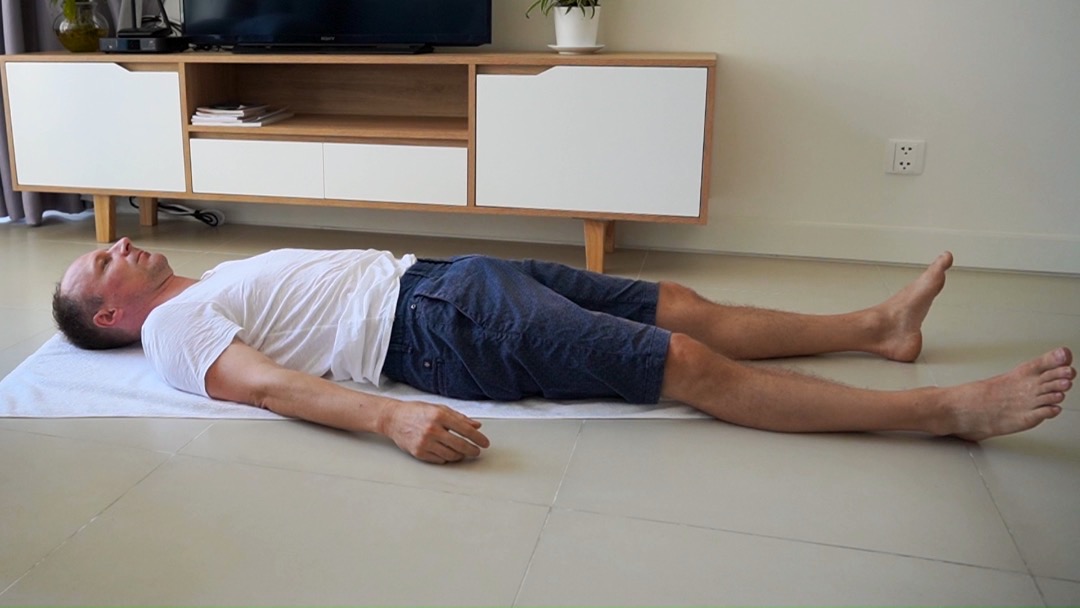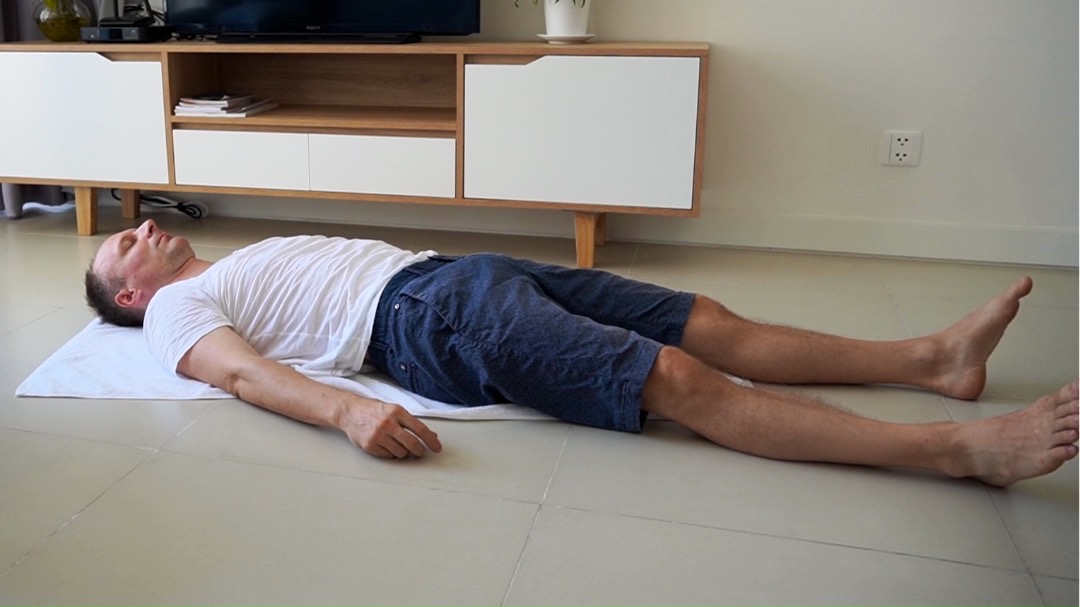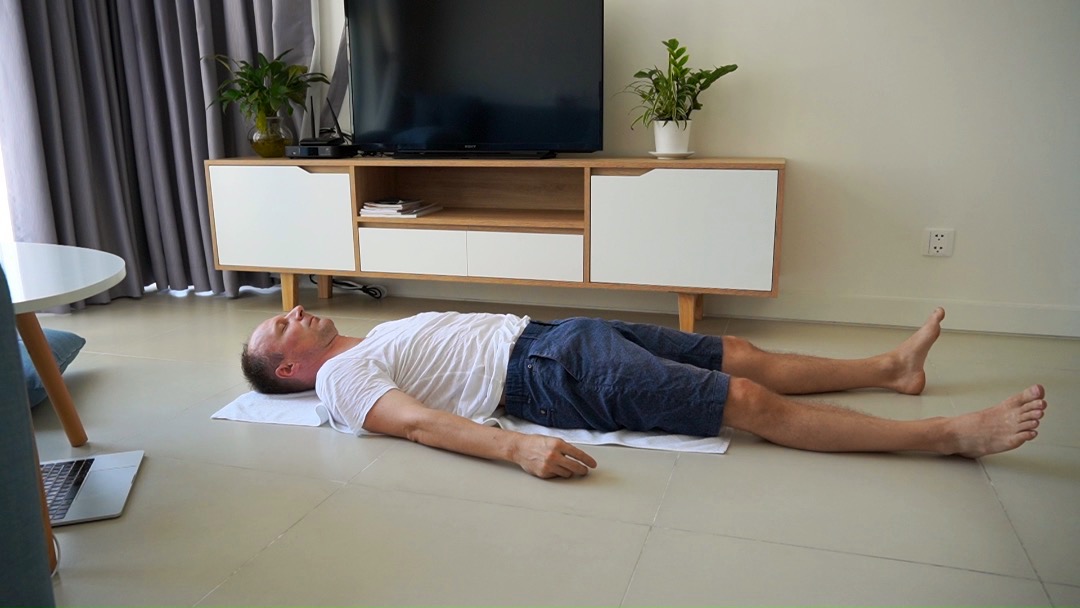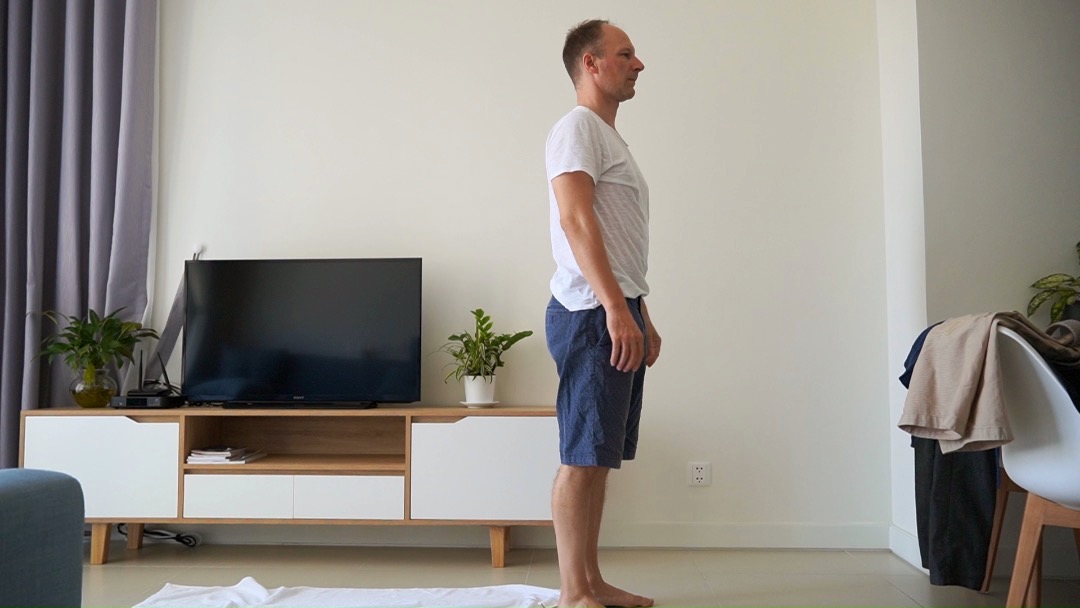The extensors of the back
In prone position, you lie on your front side with your legs extended and feet standing on their toes, the knees and pelvis are lifted, and you push from the toes to the head upwards. Head and arms are in various positions. This creates an arch in the back, which spans from the toes up all the way to the head.
We explore how different head and arm positions affect how movement is transmitted from the feet up to the head. Furthermore, we learn how the movement can be divorced from any head or arm position and thus not being much affected by any specific head or arm position. We learn to get a better feeling for being centered between left and right. This long lesson packs in a number of smaller lessons.
extensionspine-chainprone extension_prone_2
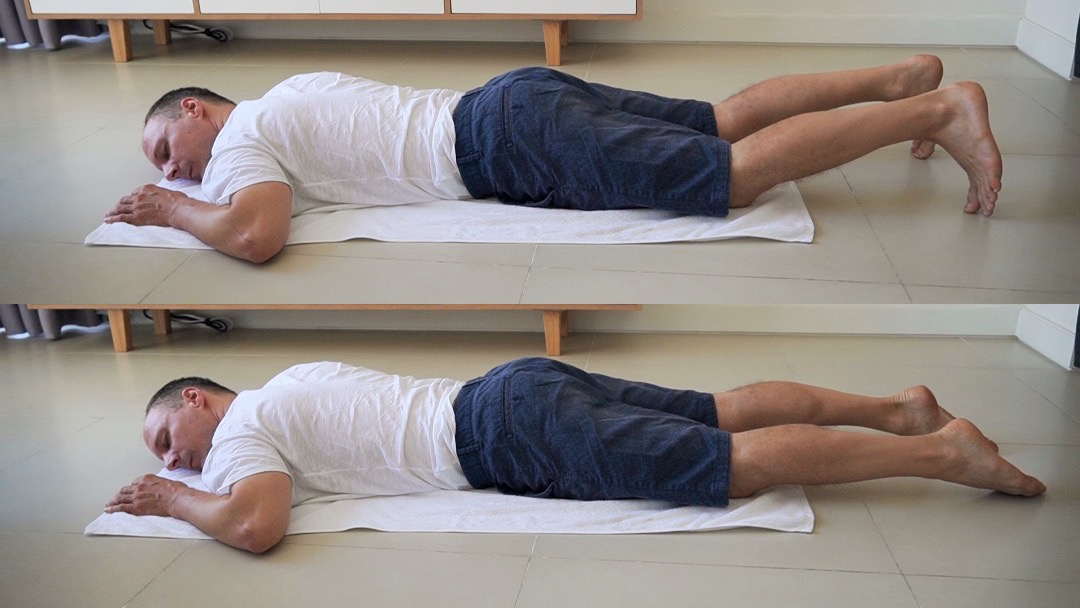
Prone position, hands somewhere next to your head, legs extended and spread a bit.
Bend + extend feet
Stand your feet on your toes and extend them again.
- See how smooth, slow, and also how fast you can go.
Notice whether you can bend your toes or if they are stiff.
Bend + extend feet
Stand your feet on your toes and extend them again.
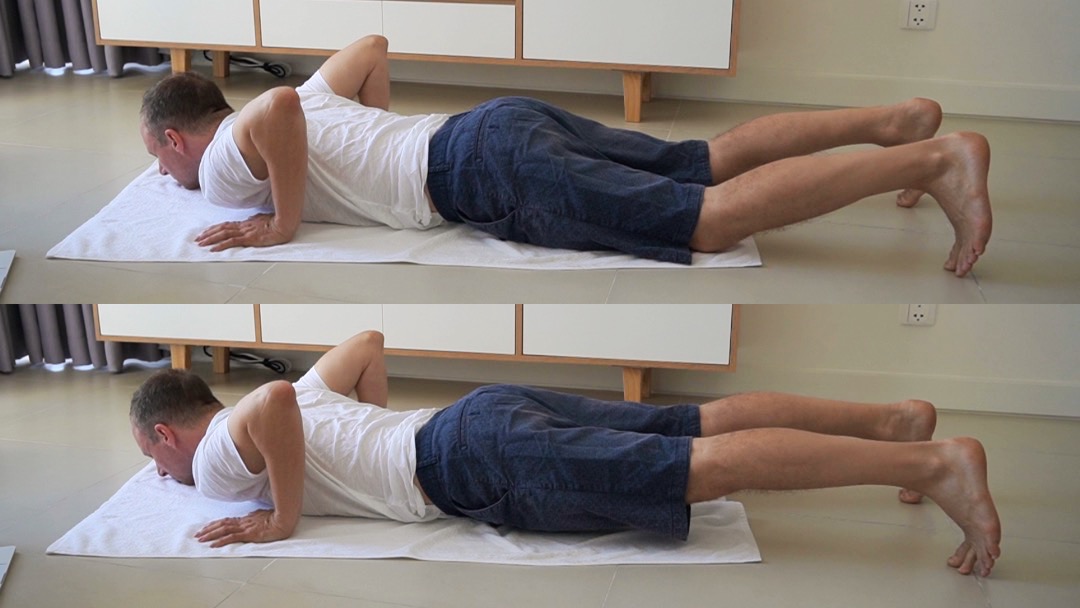
Prone position, face forwards, stand both feet on their toes, stand both hands like in a push up position.
Lift knees
Push with your feet upwards, observe your contact with the floor.
- Feel where you lean on your stomach and chest, and how that point of contact shifts when you lift your knees.
Lift knees
Push with your feet upwards, observe your contact with the floor.
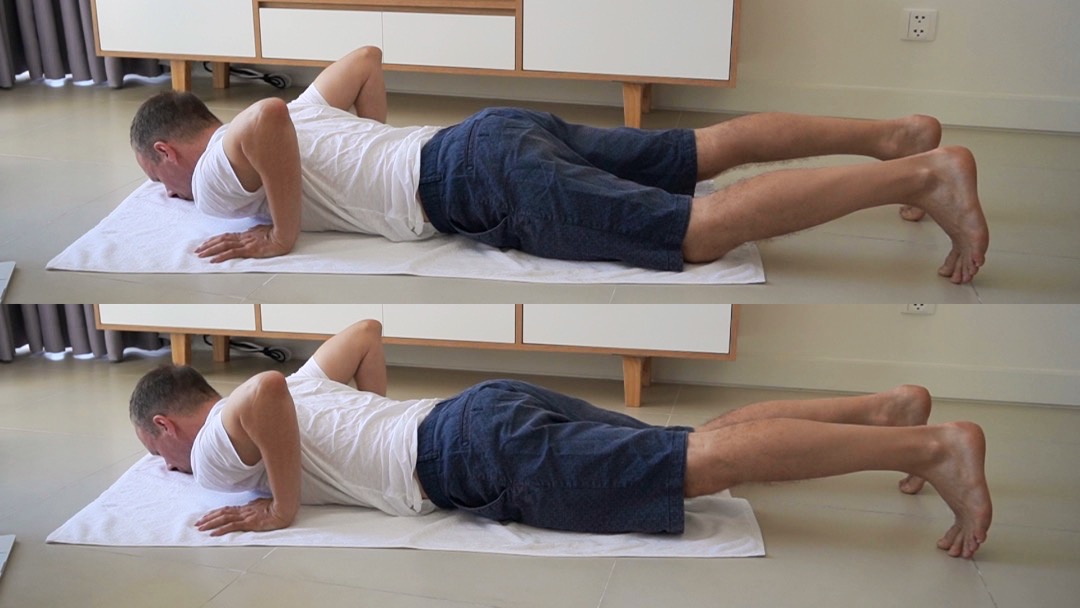
Prone position, face forwards, stand both feet on their toes, stand both hands like in a push up position.
Lift knees alternately
One after the other. Start slow, then move faster and faster.
- How fast can you get?
How does this movement travel upwards to your chest and head?
Lift knees alternately
One after the other. Start slow, then move faster and faster.
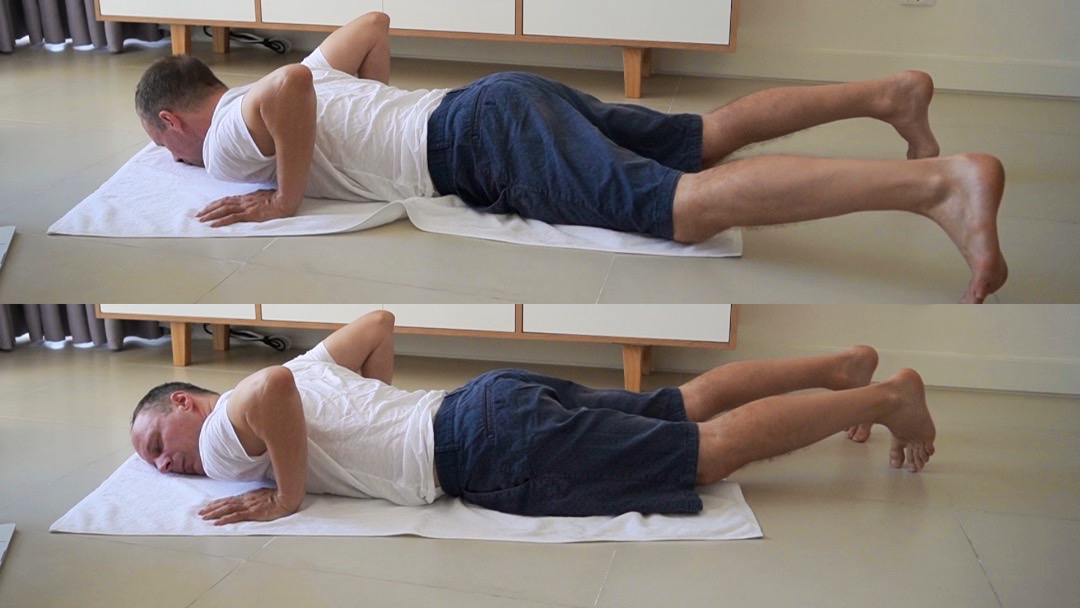
Prone position, hands like in a push up position, feet standing.
Head left, center, or right, feet sliding
Rest your head in various orientations. Slide one foot to the outside, or both feet together.
- Start with the head turned to the left, rest your head. Slide your right foot (and leg) out to the side, and also in towards the midline.
Move through all possible combinations. See how your pelvis moves or doesn't move. What makes it easier or harder?
Observe how your whole spine is involved.
Head left, center, or right, feet sliding
Rest your head in various orientations. Slide one foot to the outside, or both feet together.
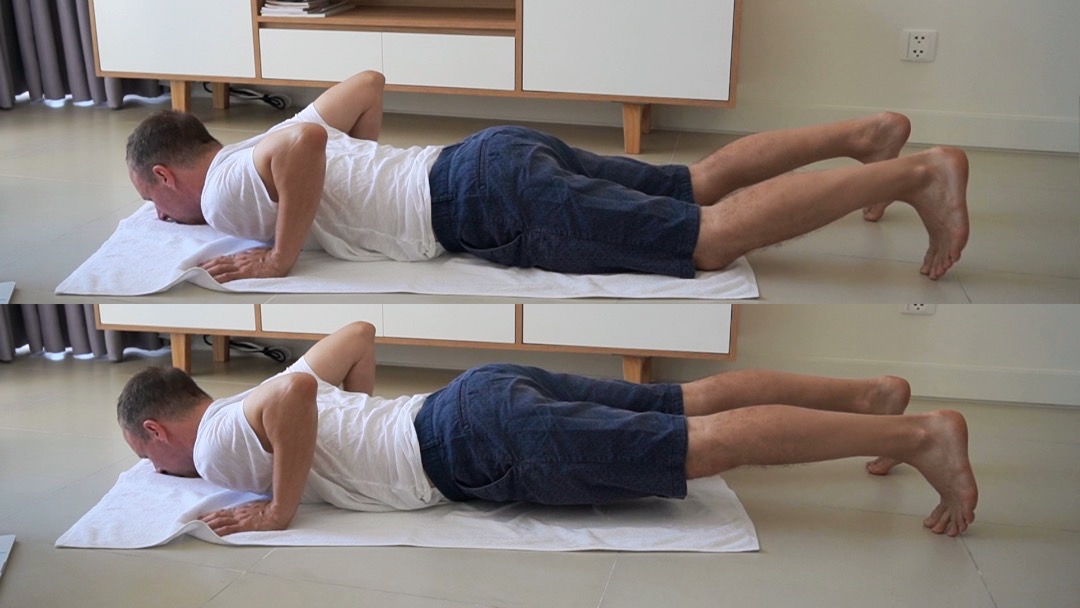
Prone position, hands like in a push up position, feet standing.
Reference movement
Lift knees
Push with your feet upwards, observe how it is now.
- Feel where you lean on your stomach and chest, and how that point of contact shifts when you lift your knees.
Is it more symmetrical?
Reference movement
Lift knees
Push with your feet upwards, observe how it is now.
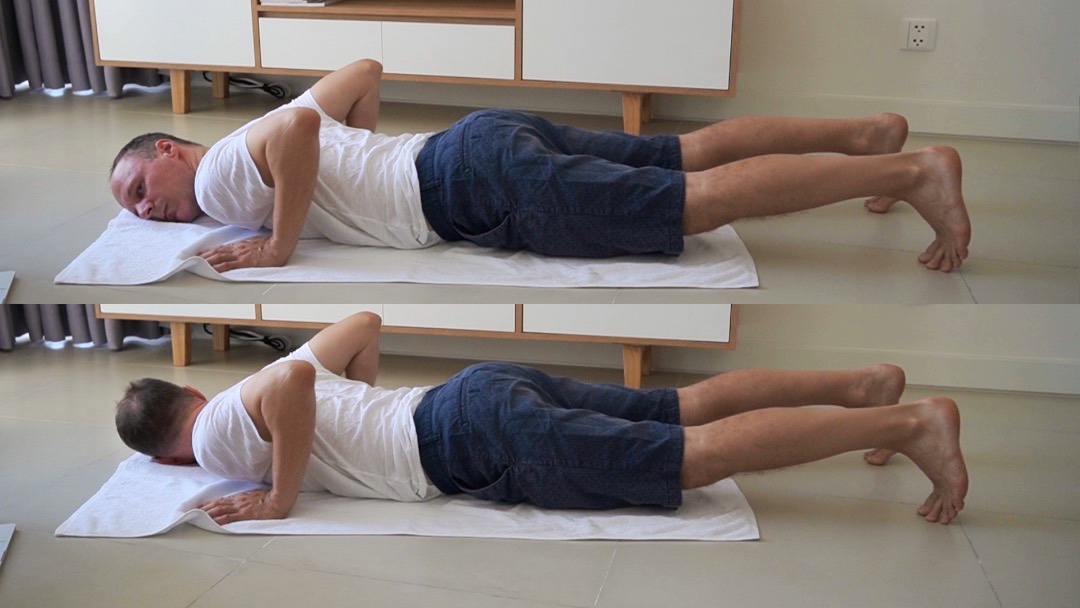
Prone position, hands like in a push up position, feet standing, knees lifted
Continuation
Rock back and forth, head left or right
Continue the rocking motion, but once with your head turned to the left, once to the right.
- Feel how the head position changes the transmission of the push through the torso.
Continuation
Rock back and forth, head left or right
Continue the rocking motion, but once with your head turned to the left, once to the right.
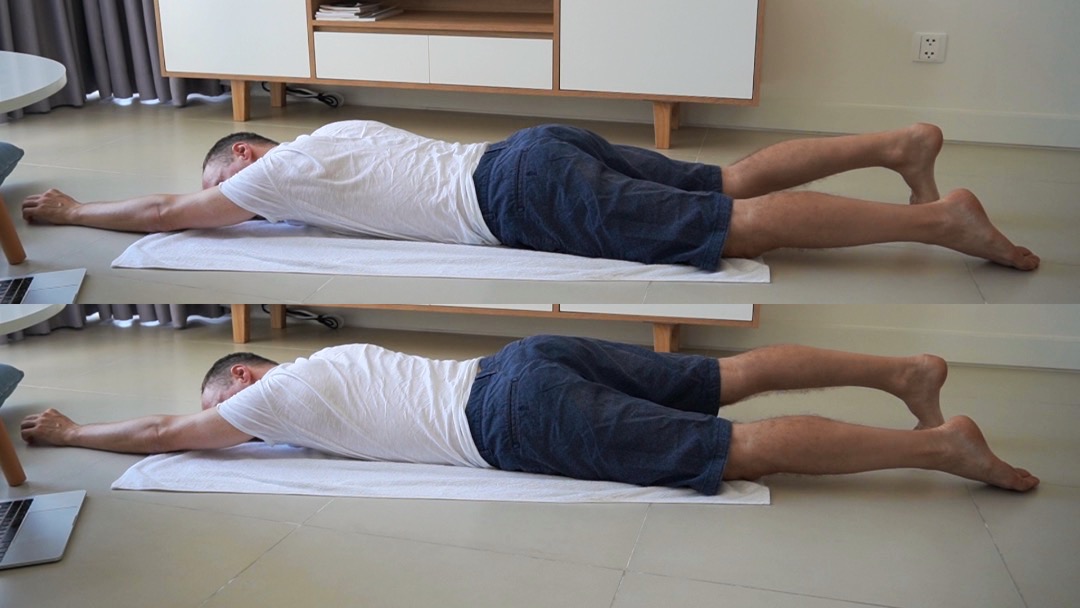
Prone position, head to the left, left arm extended upwards, right arm alongside the torso, left leg resting, right foot standing on its toes.
Lift right knee, push up towards left hand
Observe the transmission of movement throughout your whole body.
- By lifting your right knee push your left hand further upwards.
Lift right knee, push up towards left hand
Observe the transmission of movement throughout your whole body.
Head to the left or right?
How does your head position interfere or help with the previous movement?
- We will try both variations, and then see that the relationship can be free and not influence the movement, a dissociation of the head position from the movement.
Head to the left or right?
How does your head position interfere or help with the previous movement?
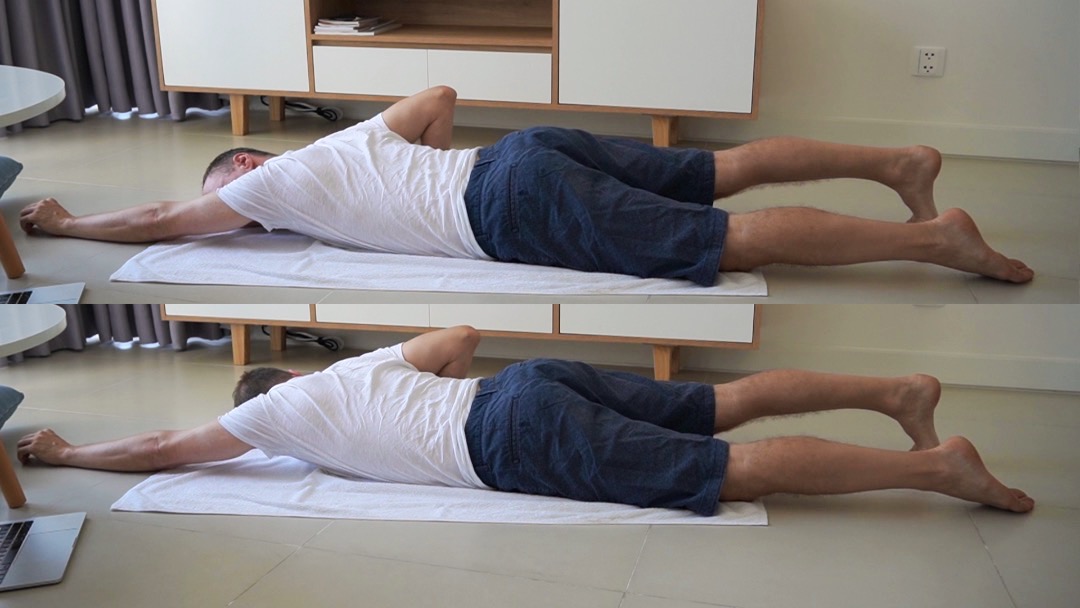
Prone position, head to the left / right, right hand standing in a push up position, left arm extended upwards, left leg resting, right foot standing.
Push up towards left hand, rocking
Try it with your head turned to the left, and also to the right.
- See if the head position interferes with the movement, or helps with the movement.
Push and rock fast and slow, many times. Change your head position many times.
Push up towards left hand, rocking
Try it with your head turned to the left, and also to the right.
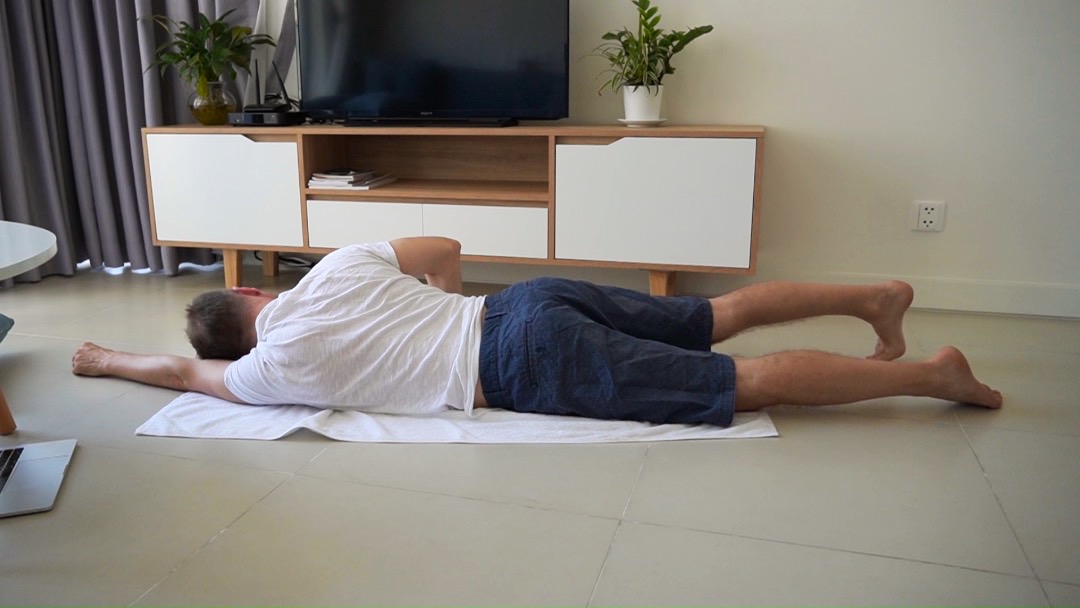
Prone position, head to the left / right, right hand standing in a push up position, left arm extended upwards, left leg resting, right foot standing.
Continuation
Push upwards, flatten left side to the ground
Continue the same movement, do anything that's necessary to bring down your left armpit more. Experiment with having your head turned to the right and also to the left.
Continuation
Push upwards, flatten left side to the ground
Continue the same movement, do anything that's necessary to bring down your left armpit more. Experiment with having your head turned to the right and also to the left.
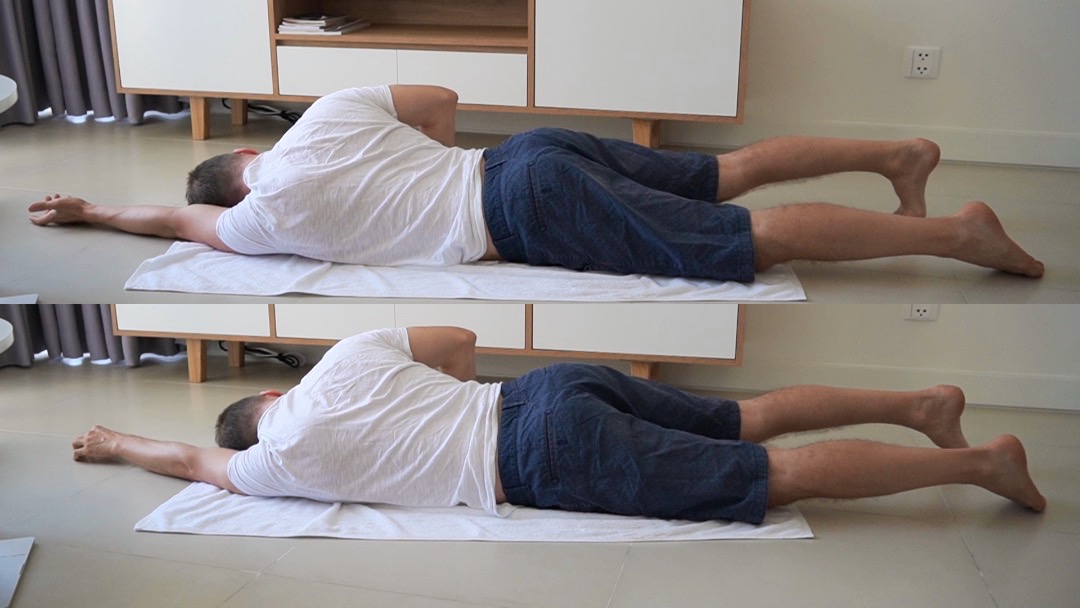
Prone position, head to the right, right hand standing in a push up position, left arm extended upwards, left leg resting, right foot standing.
Continuation
Push with right foot
Continue the same movement, once with your palm facing to the ceiling, once to the floor.
Continuation
Push with right foot
Continue the same movement, once with your palm facing to the ceiling, once to the floor.
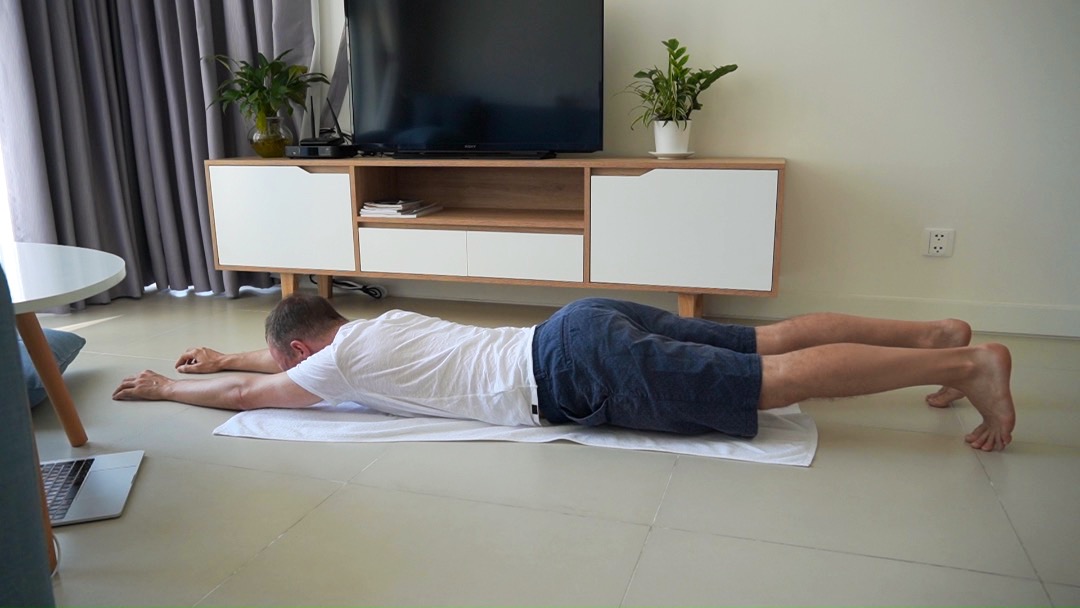
Prone position, arms extended overhead, feet standing on the toes. Knees, pelvis and head are lifted.
Rock
Push and pull your spine with the help of your feet.
- Build this movement step by step, not everything at once. Explore each step.
Push with your feet upwards, to your chest, allow your arms to be supported by push of the feet, and the rocking, to reach further up.
Rest when tired.
Rock
Push and pull your spine with the help of your feet.
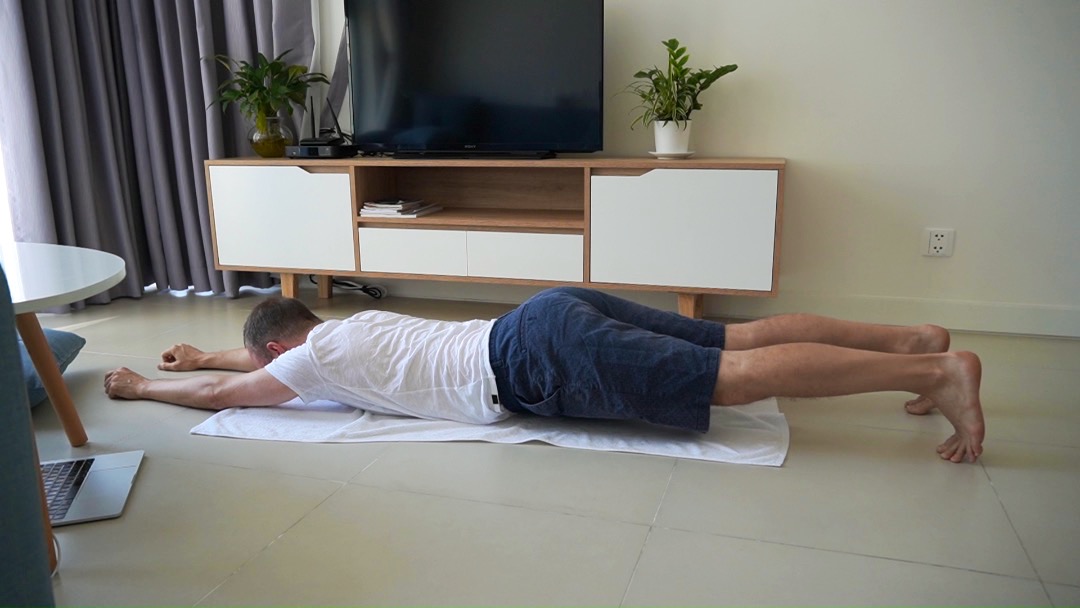
Prone position, arms extended overhead, feet standing on the toes.
Continuation
Lift knees, pelvis, and the head
Start with lifting both knees, then your pelvis, then your head.
- Do this many times.
Lift your head, knees, and then your pelvis, higher and higher.
Continuation
Lift knees, pelvis, and the head
Start with lifting both knees, then your pelvis, then your head.
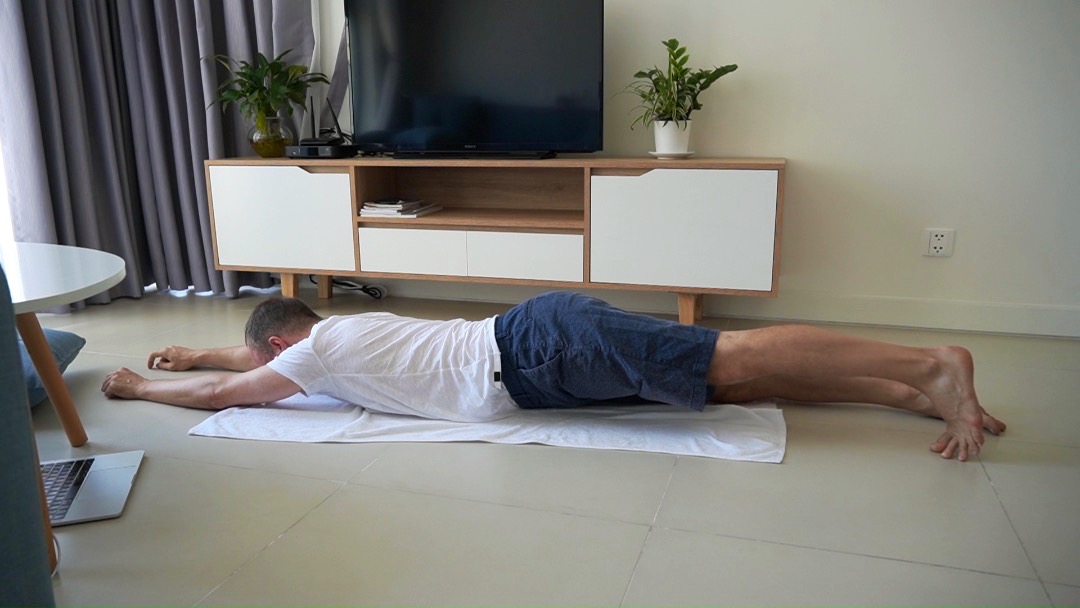
On the belly, both arms extended overhead, head centered. Right leg extended. Left foot standing on its toes.
Lift left knee, push up
Feel the push going to your right hand, and how this asymmetrical setup affects the movement.
Lift left knee, push up
Feel the push going to your right hand, and how this asymmetrical setup affects the movement.
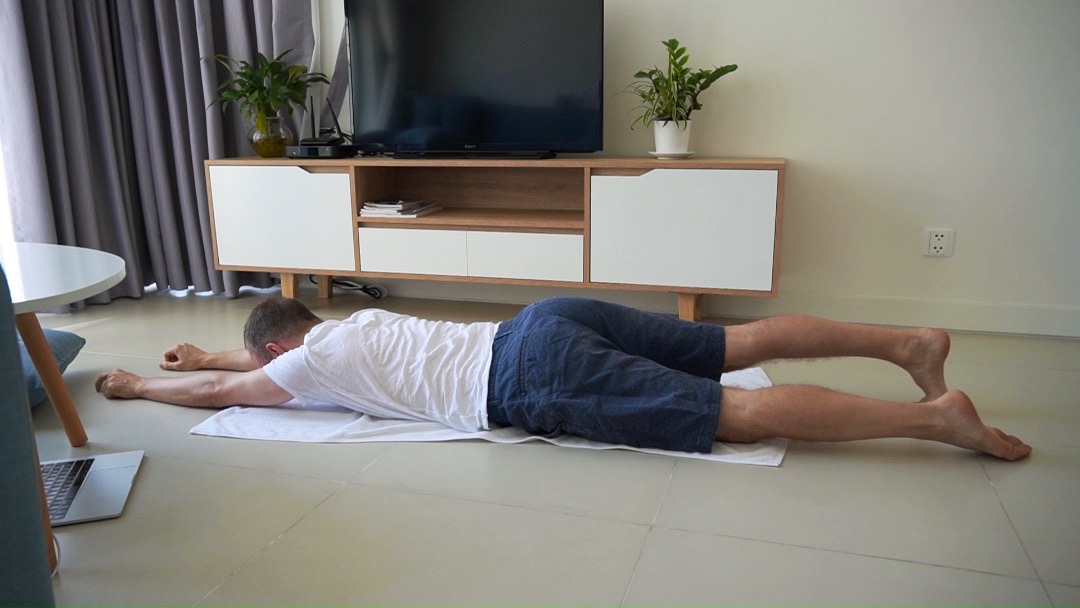
On the belly, both arms extended overhead, head centered. Left leg extended. Right foot standing on its toes.
Lift right knee, push up
Feel the push going to your left hand. Then lift left and right knee alternatively.
- After having explored the movement with each leg separately, lift one and then the other.
Lift right knee, push up
Feel the push going to your left hand. Then lift left and right knee alternatively.
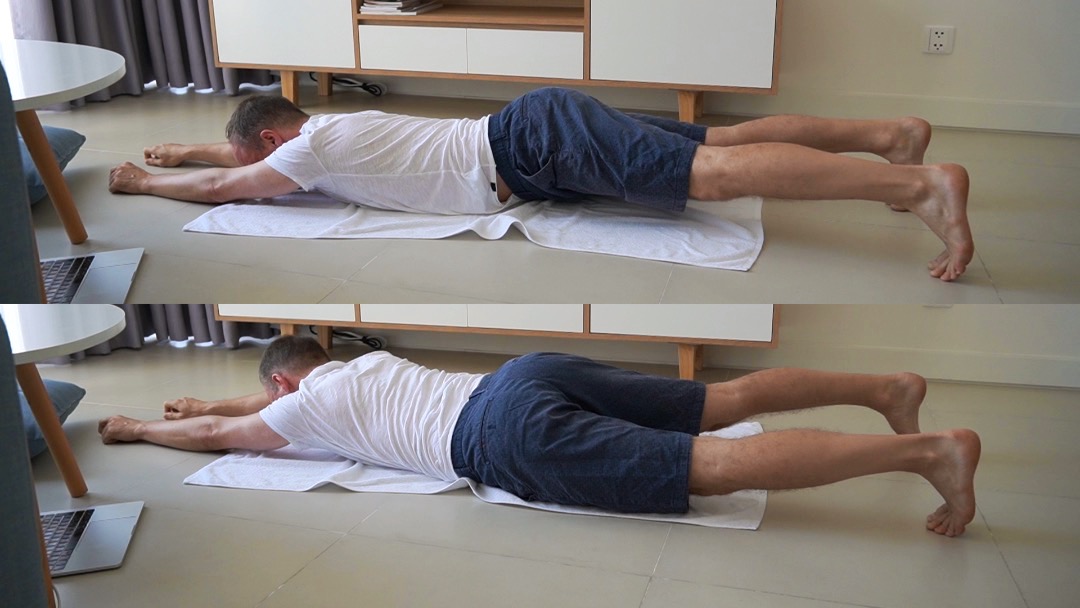
On the belly, arms extended overhead, both legs extended and feet standing on its toes, pelvis lifted.
Move pelvis right and left
Keep your pelvis lifted, also pay attention to everything you've learned in this lesson so far.
- Feel your midline, and when you are left and right of it. Feel how your arms are being pushed up alternatively.
Feel how every minute change in position changes the mechanics and dynamics of this movement.
Move pelvis right and left
Keep your pelvis lifted, also pay attention to everything you've learned in this lesson so far.
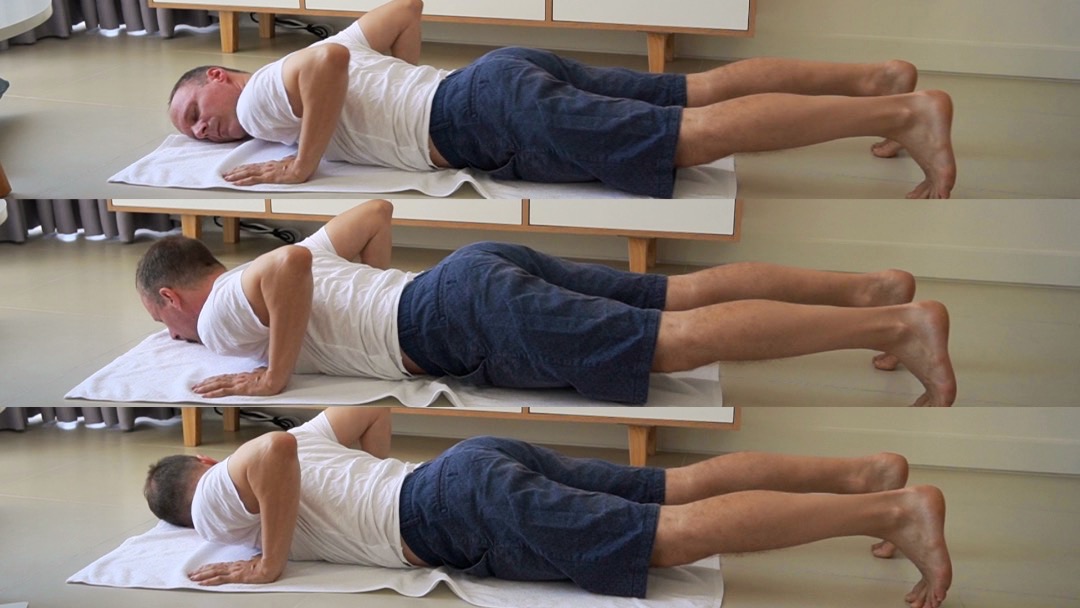
Prone position, hands like in a push up position, feet standing, knees and pelvis is lifted
Reference movement
Push upwards, various head positions
Pelvis is lifted, push with your feet upwards, observe how it is now.
- Feel where you lean on your stomach and chest, and how that point of contact shifts when you lift your knees.
Is it more symmetrical?
Reference movement
Push upwards, various head positions
Pelvis is lifted, push with your feet upwards, observe how it is now.
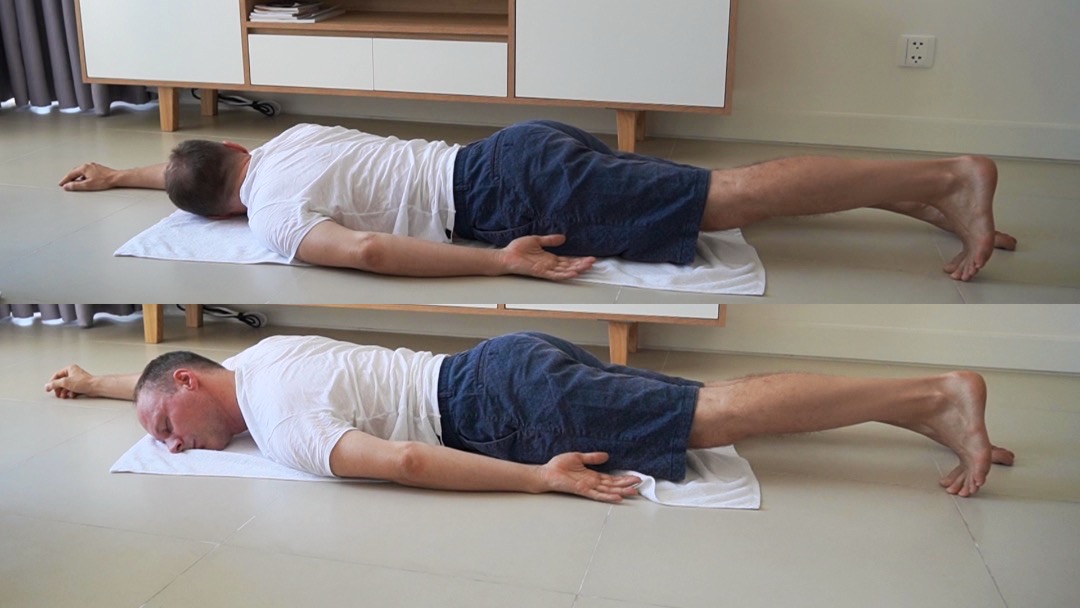
Prone position, left foot standing on its toes, left knee lifted, right leg extended, right arm extended overhead, left arm down alongside of the body
Push with left foot, right arm extended
Push upwards through your spine to your right hand. Head once to the left and to the right.
Push with left foot, right arm extended
Push upwards through your spine to your right hand. Head once to the left and to the right.
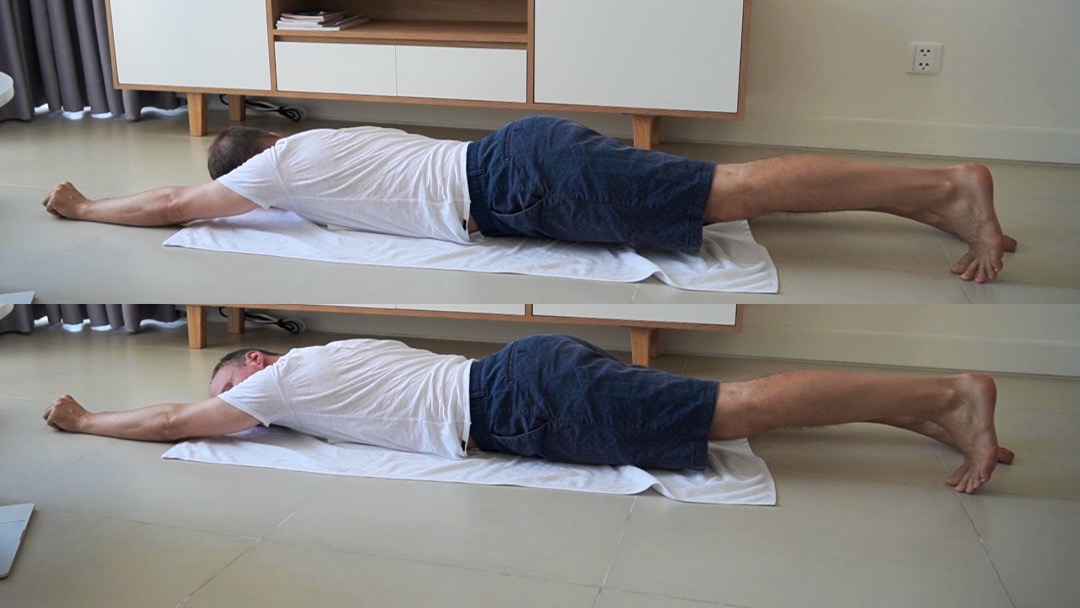
Prone position, left foot standing on its toes, left knee lifted, right leg extended and resting, left arm extended overhead, right arm down alongside of the body
Continuation
Push with left foot, left arm extended
Push upwards through your spine to your left hand. Head once to the left and to the right.
Continuation
Push with left foot, left arm extended
Push upwards through your spine to your left hand. Head once to the left and to the right.
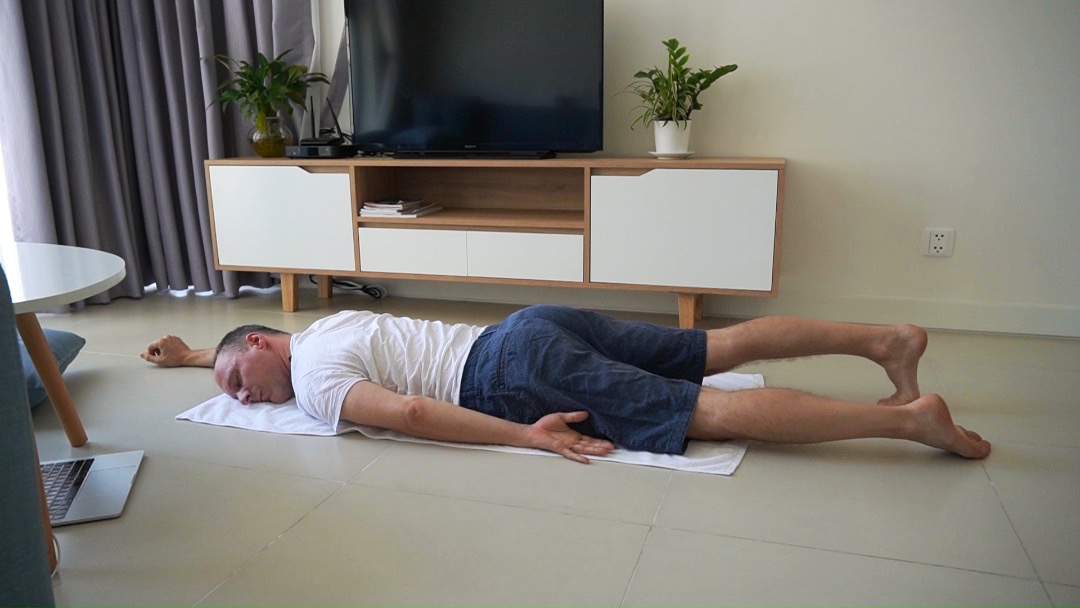
On the belly, right foot standing on its toes, right knee lifted, left leg extended and resting.
Continuation
Same pushes on the other side
Do the previous two explorations also on this side, see how it is.
Continuation
Same pushes on the other side
Do the previous two explorations also on this side, see how it is.
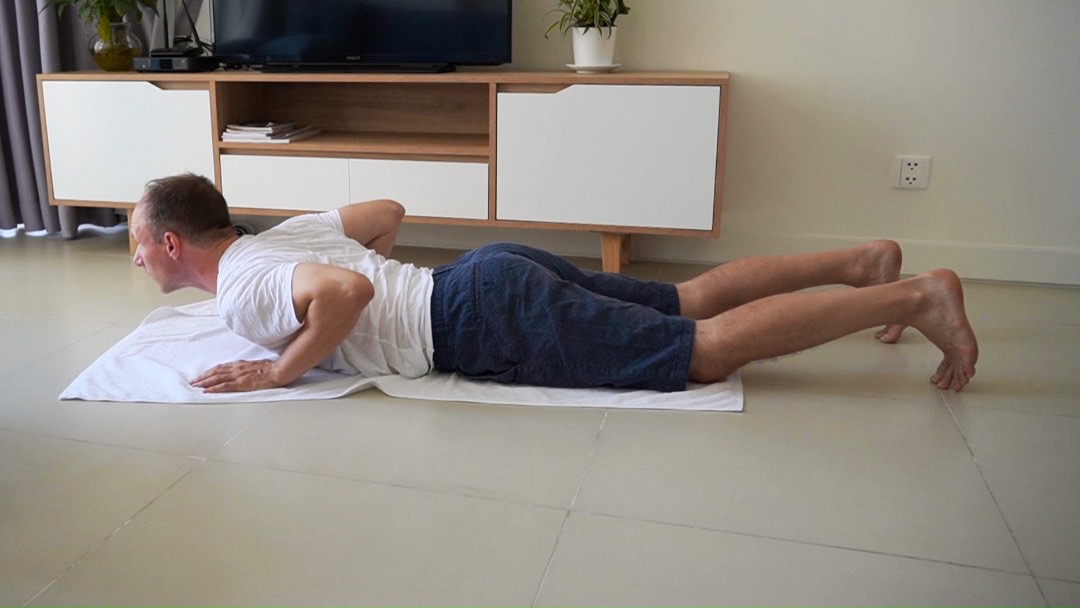
On the belly, both feet standing on its toes, knees lifted, hands in a push a position.
Lift head, lead with eyes
Little by little lift your head more and more, as if your eyes would follow an object.
- Make it smoother every time. Once have your right eye closed, once have your left eye closed.
Lift head, lead with eyes
Little by little lift your head more and more, as if your eyes would follow an object.
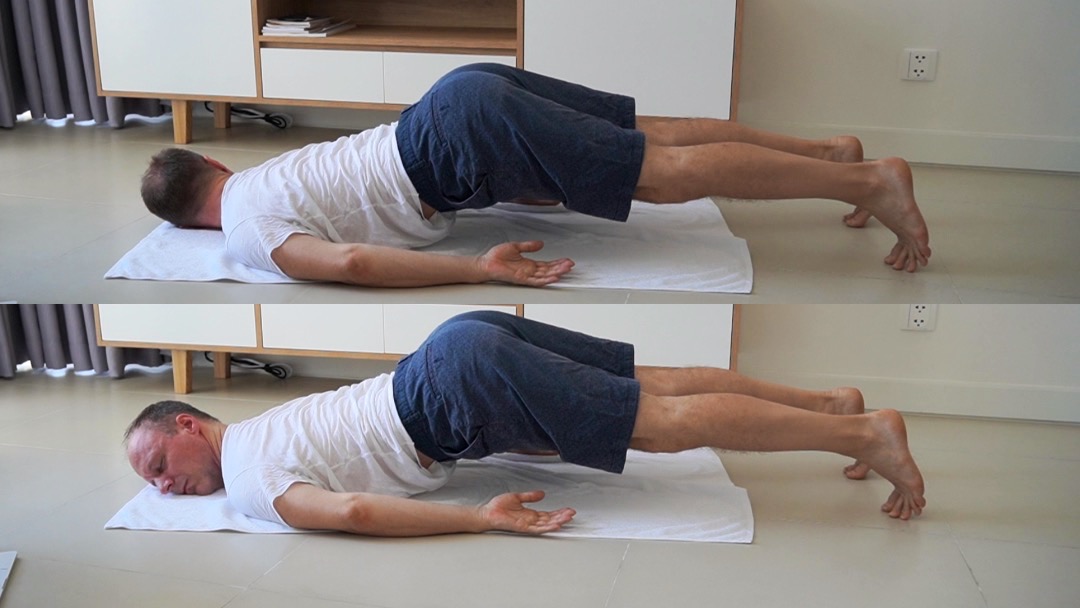
On the belly, both feet standing on its toes, knees lifted, arms alongside the body.
Lift your pelvis
Alternately with your head to the right, and to the left.
- Let your pelvis and knees rest down to the floor after lifting. Start a new movement every time you lift your pelvis.
Lift your pelvis
Alternately with your head to the right, and to the left.
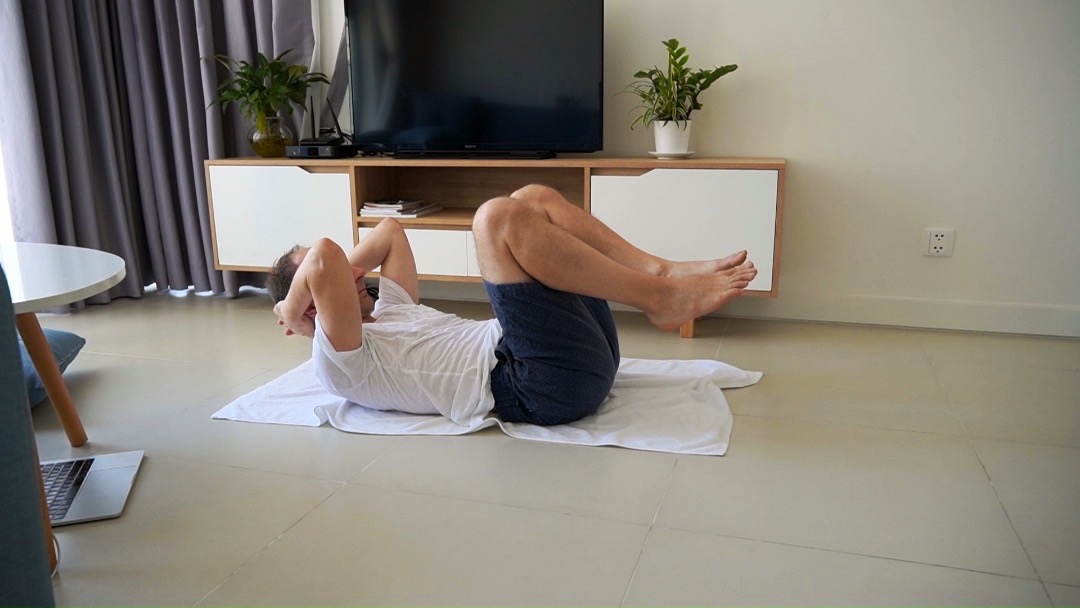
On the back
Flexion movement
Curl up, stay there, slowly roll a bit forwards and backwards.
- After such a long lesson of extension movements we need to counter it with a flexion movement. Otherwise the body might stay in extension and strain the lower back.
Flexion movement
Curl up, stay there, slowly roll a bit forwards and backwards.

